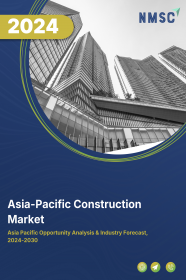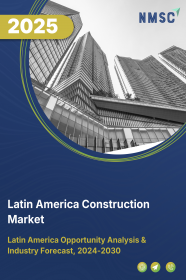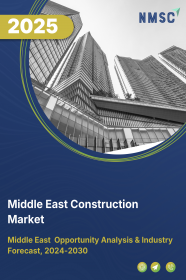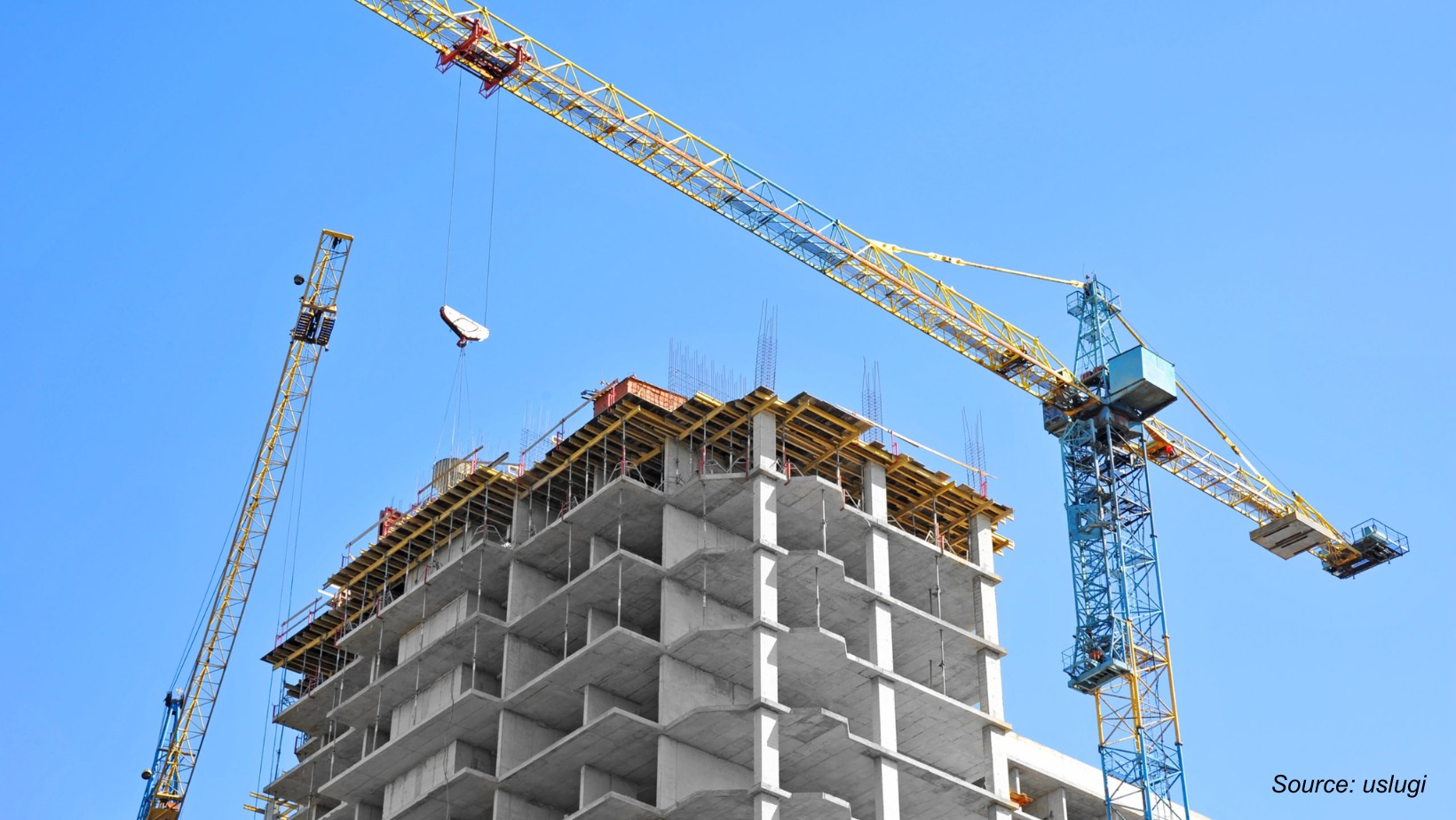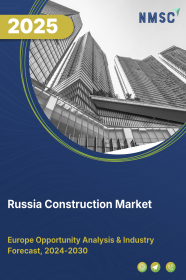
Russia Construction Market by Type (Renovation, and New Construction), by Sector (Real Estate, Infrastructure, and Industrial), by Construction Method (Traditional Construction, Prefabricated/Modular Construction, 3D Printed Construction, and Green/Sustainable Construction), by Type of Contractor (Small Contractor, Medium Contractor, and Large Contractor)– Industry Trends and Forecast, 2025–2030.
Industry: Construction & Manufacturing | Publish Date: 30-Aug-2025 | No of Pages: 85 | No. of Tables: 87 | No. of Figures: 62 | Format: PDF | Report Code : CM2208
Industry Overview
The Russia Construction Market size was valued at USD 183.65 billion in 2024, and is projected to grow to USD 188.60 billion by 2025. Additionally, the industry is expected to continue its growth trajectory, reaching USD 227.58 billion by 2030, with a CAGR of 3.8% from 2025 to 2030.
The Russia construction industry is experiencing robust growth driven by major infrastructure developments and government-led modernization initiatives, such as the USD 100.47 billion investment plan aimed at improving national transportation networks, including highways, airports, and key corridors like the Europe-Western China route.
Projects like the Vidnoye and Pride Residential Complexes and various highway upgrades reflect the country's push for modernization and regional connectivity. However, regulatory complexities, including extensive permitting processes and bureaucratic inefficiencies, continue to pose significant challenges, delaying project timelines and increasing costs.
Despite these barriers, the growing adoption of Building Information Modeling (BIM) and integration of advanced technologies like AI, IoT, and cloud computing presents lucrative opportunities for enhanced project execution and market expansion.
Infrastructure Developments Driving Growth in the Russia Construction Market
The construction sector in Russia is undergoing robust expansion, largely fueled by an increase in major infrastructure projects across the country. In recent years, several large-scale developments have played a pivotal role in accelerating construction activity. These projects not only address critical urban and regional development needs but also demonstrate Russia’s strategic commitment to improving connectivity, mobility, and the overall quality of infrastructure.
The rise in infrastructure spending is having a cascading effect on related construction segments, including residential, commercial, and logistics facilities. Improved transportation networks and public utilities are unlocking new zones for urban development, driving demand for housing, office spaces, and industrial parks. This infrastructure-led growth is also attracting domestic and international investments in construction technologies and materials, creating new opportunities for contractors, developers, and service providers operating within Russia’s built environment.
Government-Led Initiatives Fueling Demand in the Russia Construction Market
Government-backed programs are playing a central role in shaping the trajectory of Russia’s construction market. According to the International Trade Administration (ITA), the Russian government has committed approximately USD 100.47 billion to a six-year modernization strategy, targeting critical upgrades across highways, railways, airports, seaports, and related infrastructure. These investments are a core component of Russia’s national development agenda, aimed at stimulating economic activity, reducing regional disparities, and enhancing logistics capabilities.
Among the most prominent objectives of this initiative are the development of key strategic corridors such as the Europe–Western China transport route and the Northern Sea Route. These corridors are vital to boosting Russia’s trade competitiveness and geopolitical relevance. The scale and scope of such projects are generating high demand for construction services, materials, and skilled labor, while also fostering innovation in infrastructure design, sustainability, and digital construction practices. As a result, government leadership continues to be a powerful growth engine for Russia's construction industry.
Regulatory Complexities Restrain Growth in the Russia Construction Market
Regulatory complexity remains a significant challenge restraining the growth and efficiency of the construction market in Russia. Infrastructure projects are often delayed by an intricate web of approval processes, which require coordination across municipal, regional, and federal levels. Developers must secure multiple permits related to land use, environmental compliance, safety protocols, and adherence to evolving building codes. These requirements, while aimed at maintaining quality and accountability, can become a bottleneck due to overlapping jurisdictions and unclear procedural timelines.
The permitting process is further complicated by bureaucratic inefficiencies and inconsistent regulatory enforcement across different regions. Disparities in local interpretations of national regulations can result in project delays, cost escalations, and administrative uncertainty. Moreover, frequent amendments to construction-related legislation or sudden policy shifts—especially in the context of environmental and urban planning laws—can disrupt ongoing developments and erode investor confidence. These regulatory hurdles collectively dampen the pace of infrastructure expansion and pose risks to project viability in the Russian construction sector.
Integration of Digitalization and BIM Presents Lucrative Opportunity for the Russia Construction Market Expansion
The construction sector in Russia is undergoing a significant transformation driven by the integration of digital technologies, with Building Information Modeling (BIM) emerging as a central enabler of this shift. BIM allows for comprehensive digital planning, design coordination, and real-time simulation of construction workflows, enabling greater precision, cost control, and collaboration across project stakeholders. As the demand for efficient, large-scale infrastructure and urban development grows, the adoption of BIM is offering a strategic advantage in minimizing delays, reducing rework, and optimizing resource utilization.
Recent technological advancements underscore this momentum. In Russia, construction firms are increasingly integrating AI, IoT, and data-driven platforms alongside BIM to enable predictive maintenance, smart infrastructure monitoring, and real-time project tracking. These technologies not only improve operational efficiency but also open new avenues for smart city development, sustainable building practices, and long-term asset management, marking a major opportunity for market expansion.
Competitive Landscape
The market players operating in the Russia construction industry include Samolet Group, Etalon Group, TransStroy, Stroytransgaz, Mostotrest, LSR Group, Glavstroy, Mosinzhproekt JSC, Renaissance Construction, Kortros and others.
Russia Construction Market Key Segments
By Type
-
Renovation
-
New Construction
By Sector
-
Real Estate
-
Residential
-
Affordable
-
Luxury
-
-
Commercial
-
Retail Buildings
-
Office Buildings
-
Hospitality
-
Healthcare Facilities
-
Educational Institutes
-
Entertainment Ventures
-
-
Infrastructure
-
Transportation
-
Airport
-
Port
-
Rail
-
Road
-
-
Water and Wastewater
-
Energy
-
Telecommunication
-
-
Industrial
-
Manufacturing Plant
-
Warehouses
-
Power Plants
-
Oil Refineries
-
Chemical Plants
-
By Construction Method
-
Traditional Construction
-
Prefabricated/Modular Construction
-
3D Printed Construction
-
Green/Sustainable Construction
By Type of Contractor
-
Small Contractor
-
Medium Contractor
-
Large Contractor
Key Players
-
Samolet Group
-
Etalon Group
-
TransStroy
-
Stroytransgaz
-
Mostotrest
-
LSR Group
-
Glavstroy
-
Mosinzhproekt JSC
-
Renaissance Construction
-
Kortros
REPORT SCOPE AND SEGMENTATION:
|
Parameters |
Details |
|
Market Size in 2024 |
USD 183.65 Billion |
|
Revenue Forecast in 2030 |
USD 227.58 Billion |
|
Growth Rate |
CAGR of 3.8% from 2025 to 2030 |
|
Analysis Period |
2024–2030 |
|
Base Year Considered |
2024 |
|
Forecast Period |
2025–2030 |
|
Market Size Estimation |
Billion (USD) |
|
Growth Factors |
|
|
Companies Profiled |
10 |
|
Market Share |
Available for 10 companies |
|
Customization Scope |
Free customization (equivalent up to 80 working hours of analysts) after purchase. Addition or alteration to country, regional, and segment scope. |
|
Pricing and Purchase Options |
Avail customized purchase options to meet your exact research needs. |

















 Speak to Our Analyst
Speak to Our Analyst



